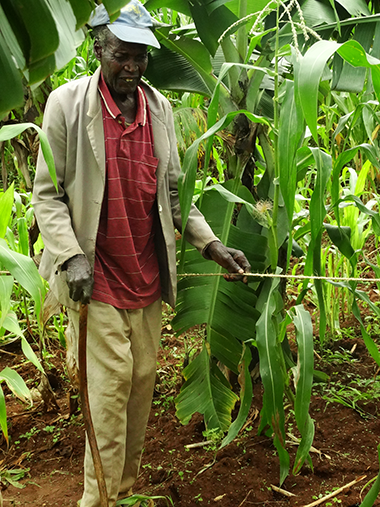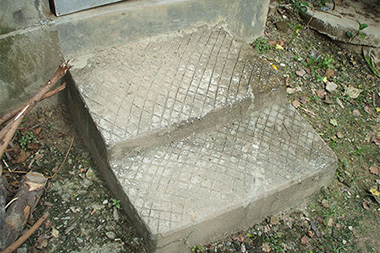4.2.2 Access to sanitation for households
The specific requirements for household latrines will vary with the needs of the family members but it is worth thinking ahead to the future. The circumstances will change over time as babies are born and grow up, people may get sick or suffer injury, and inevitably grow old and may become infirm or have weak eyesight.
Recommendations for household latrines are:
- That they are located within 15 metres of the house with a clear, level path.
- To accommodate a member of the family who is visually impaired, guide string or rope can be stretched from the house to the latrine and to the handwashing facility (Figure 4.2). Alternatively, landmark posts (wood or metal) or large stones can be placed along the edges of the path. These can be painted white to make them more noticeable.
- Many people with physical impairments may need a larger floor area than usual and have handrails and a raised seat (see Section 4.3.2 and Figures 4.4 and 4.5).
- Handwashing facilities (water and soap) should be close to the latrine and positioned so that all household members can reach them.

In some places, if the land is sloping and space is limited, it may be necessary to have steps leading to the facility. As you read in Study Session 2, steps will always be a barrier to wheelchair users but they can be made less of a problem for others. Jones and Wilbur (2014) recommend:
- Steps should be low and deep from front to back.
- They should be regular in size, with height 15–17 cm and depth 28–42 cm.
- Concrete steps can be roughened or marked with cross-hatching while the concrete is still wet to reduce the risk of slipping.
- Steps should have a handrail on one or both sides.

Look at Figure 4.3. What features of these steps are good for accessibility? Can you recommend any improvements?
The steps are low and deep and have cross-hatching in the concrete to make them less slippery. Possible improvements are a handrail to the side and a raised edge at the sides of each step.
4.2.1 Access to water for households
